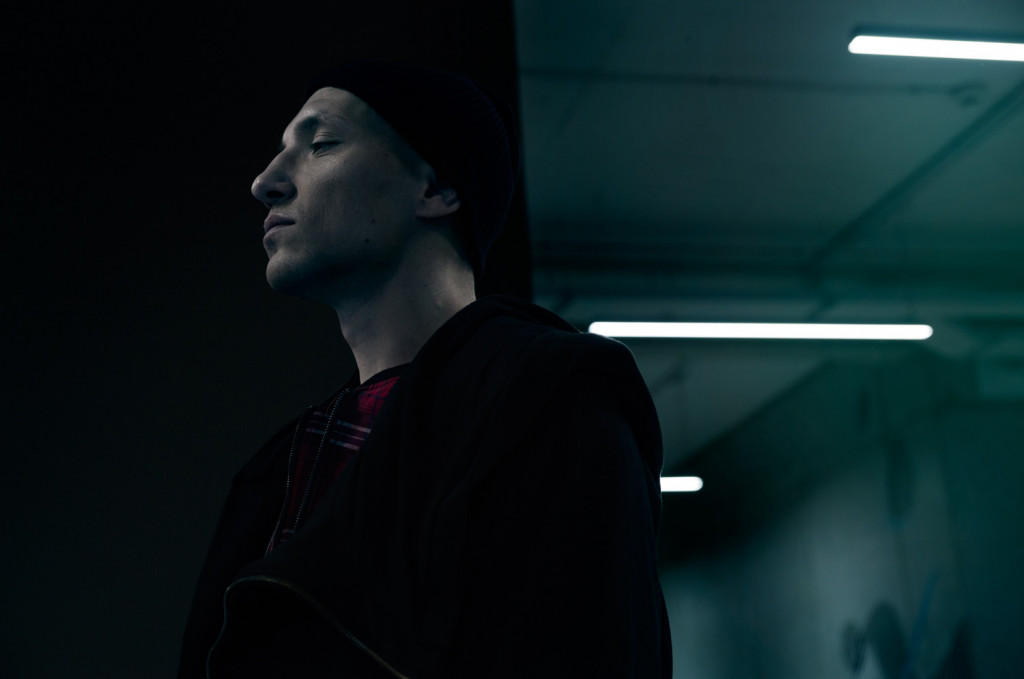
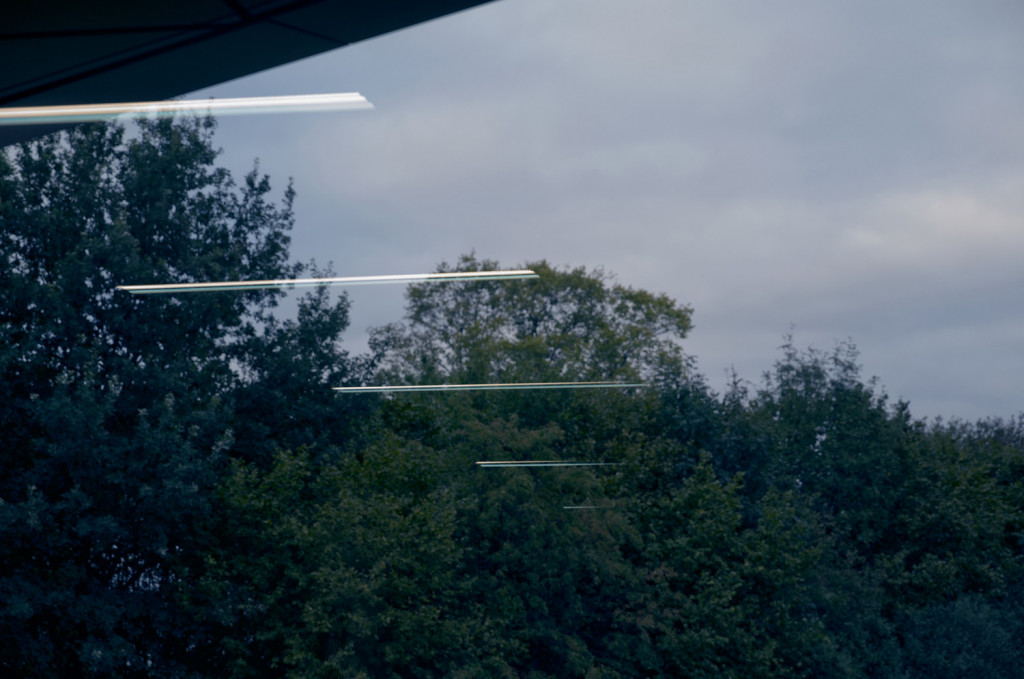
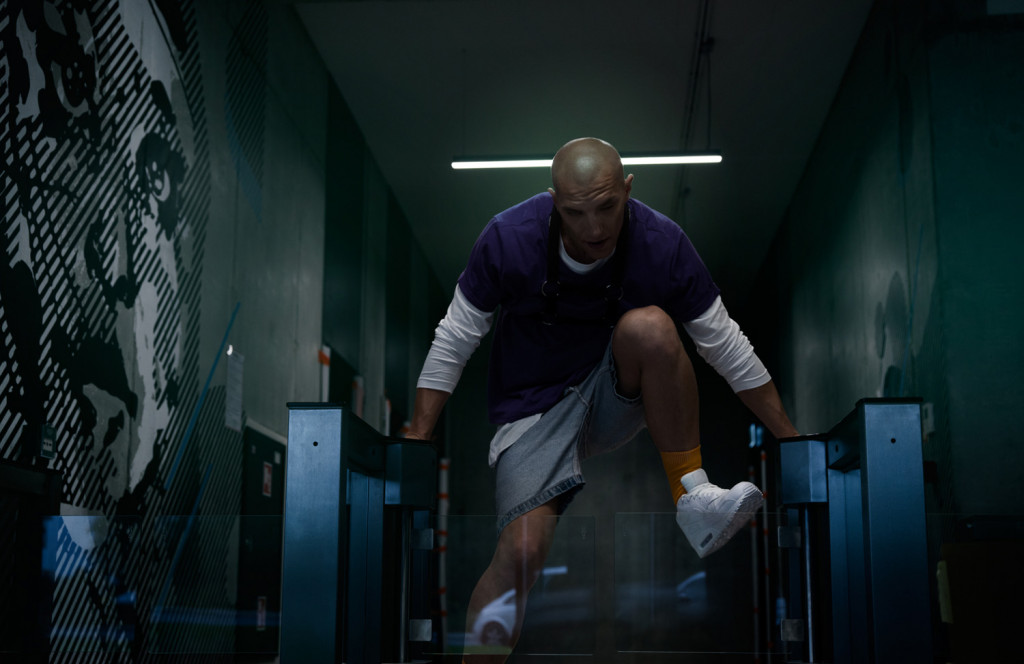
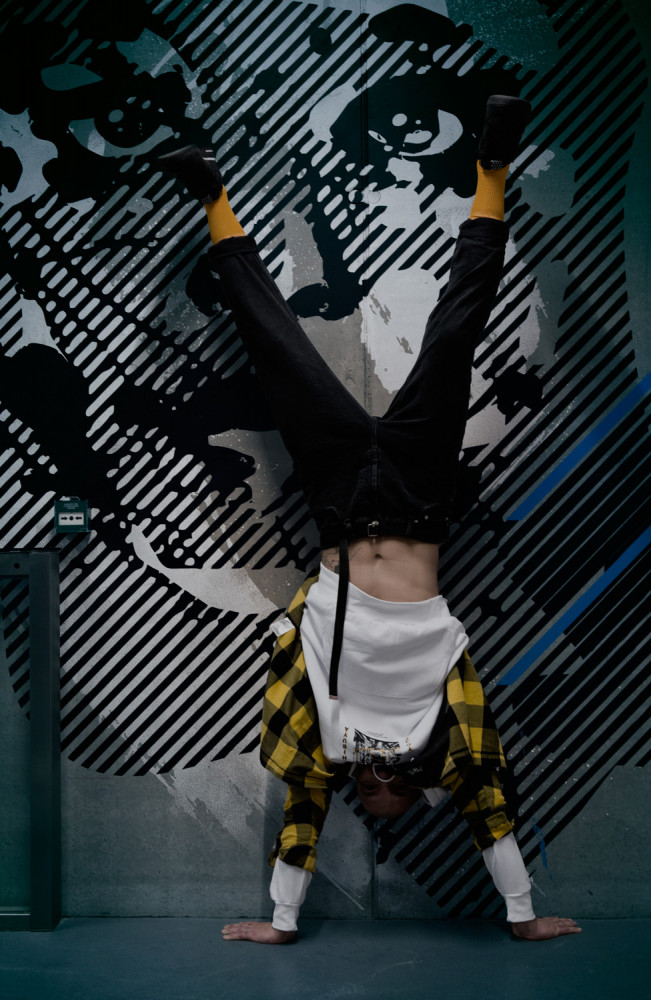
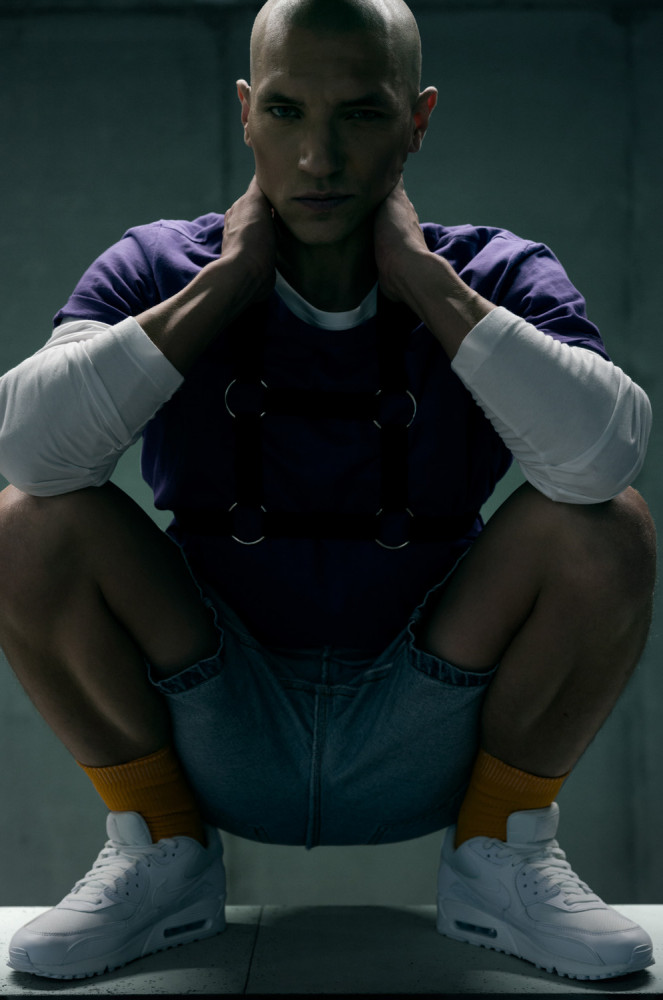
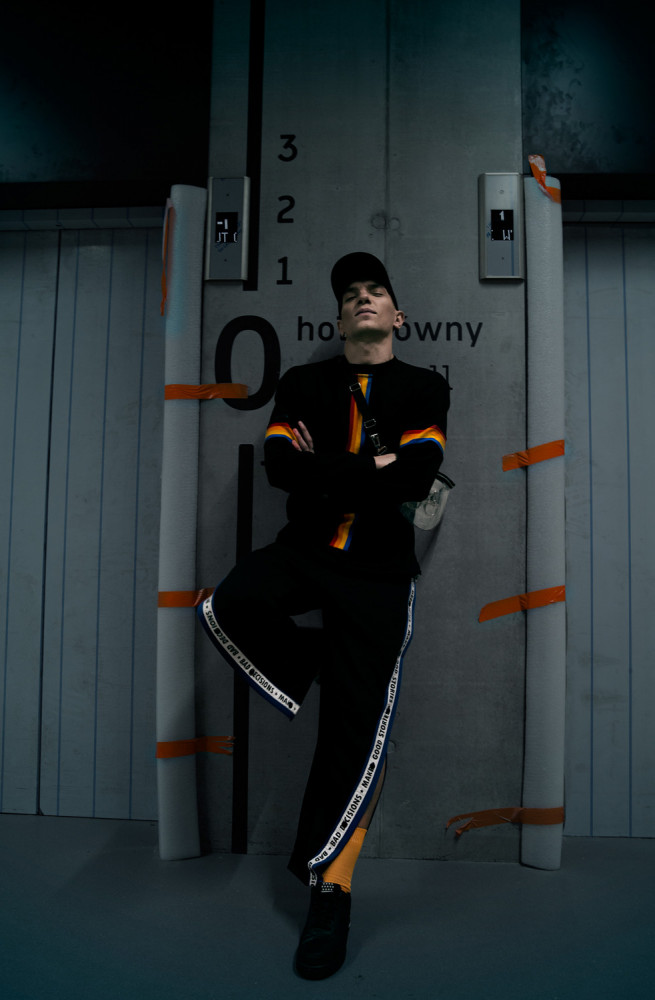
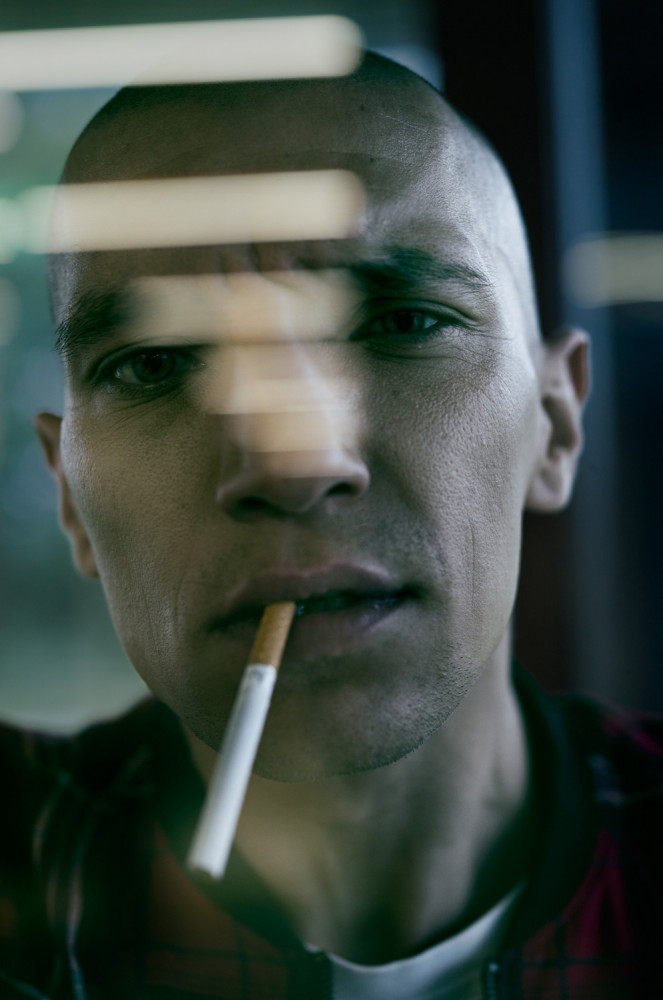
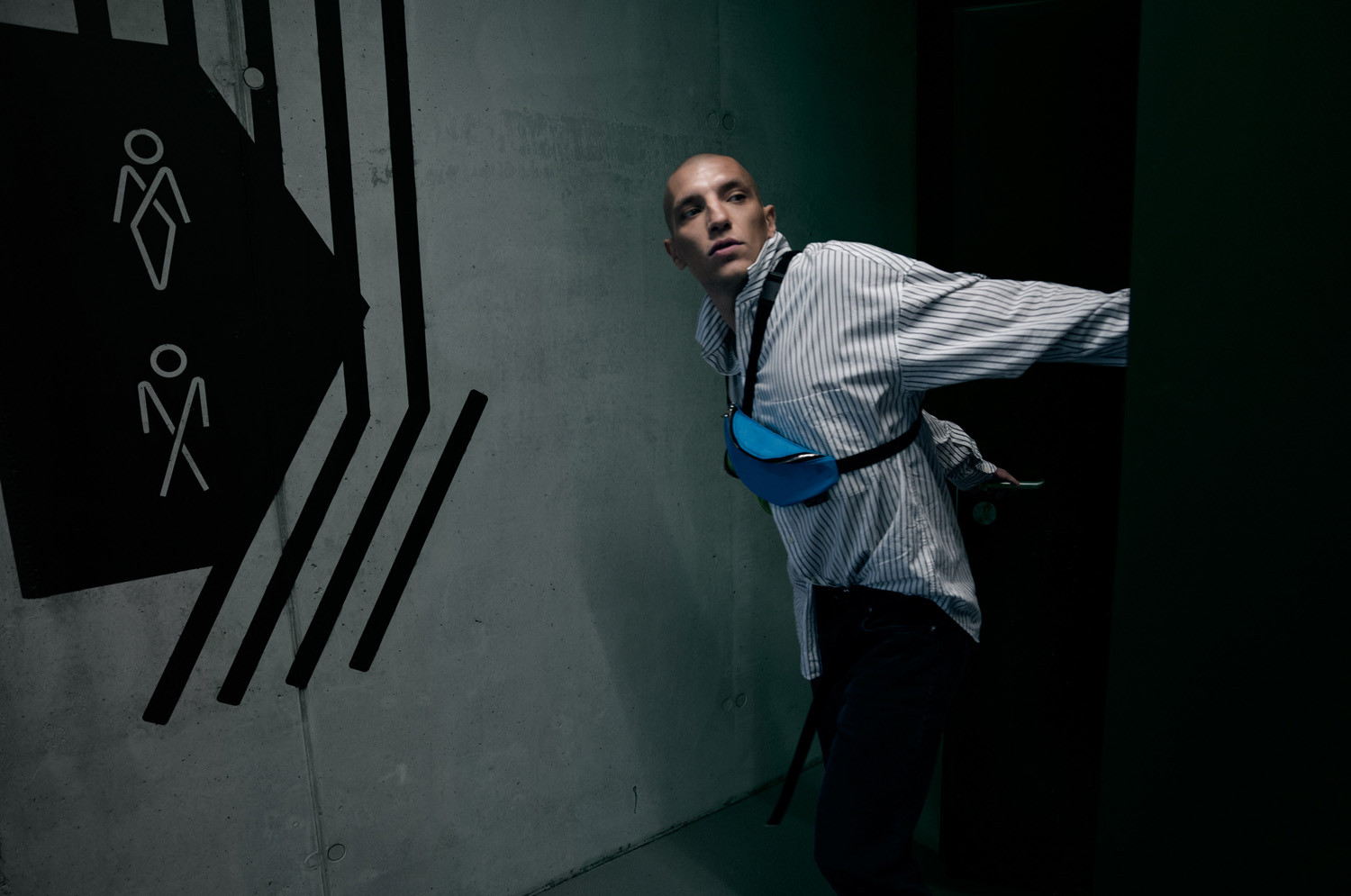
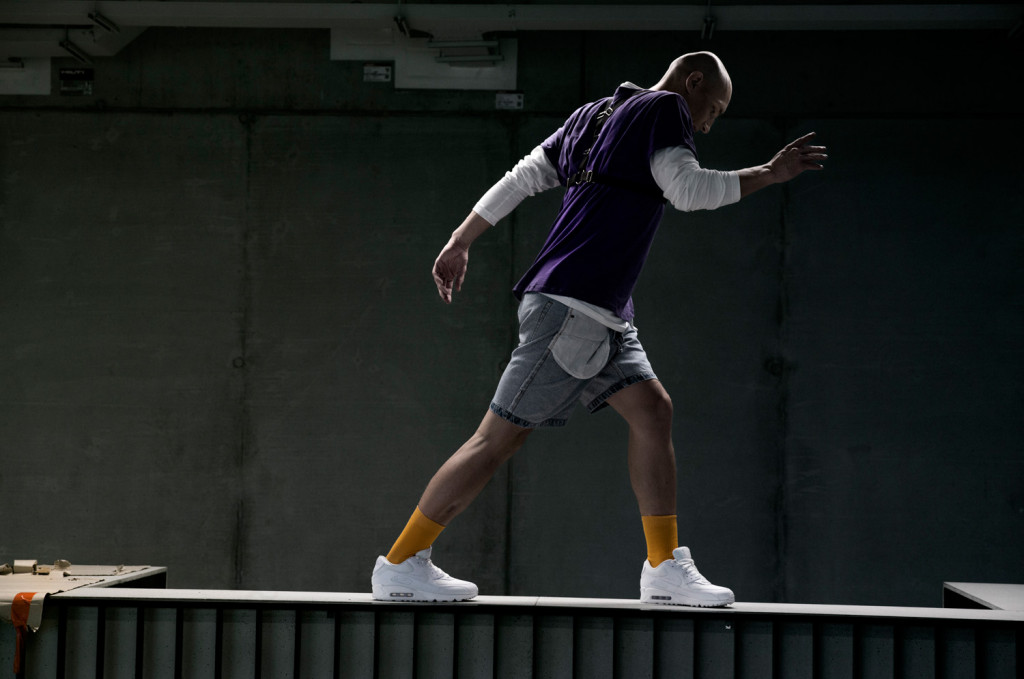
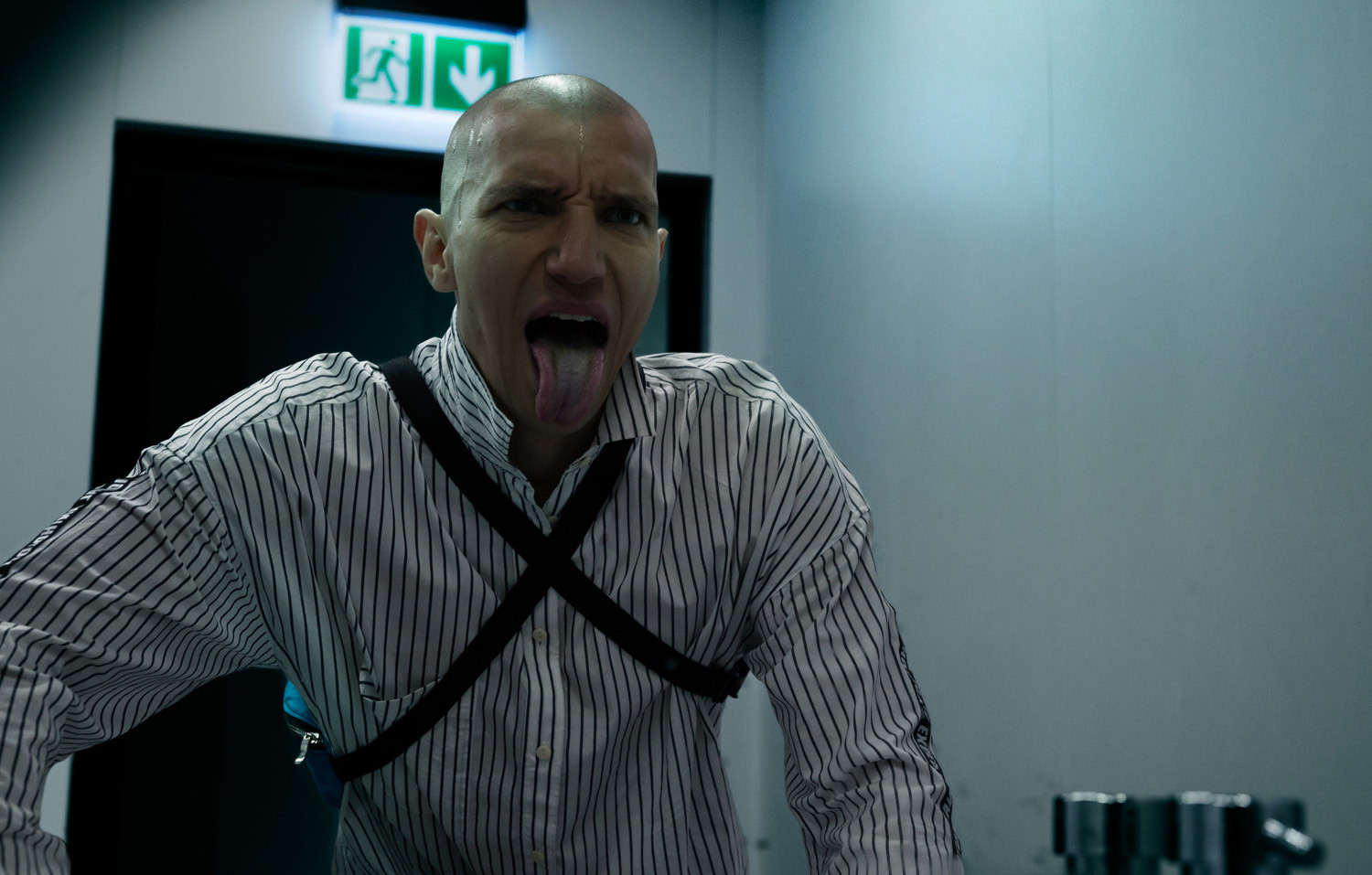
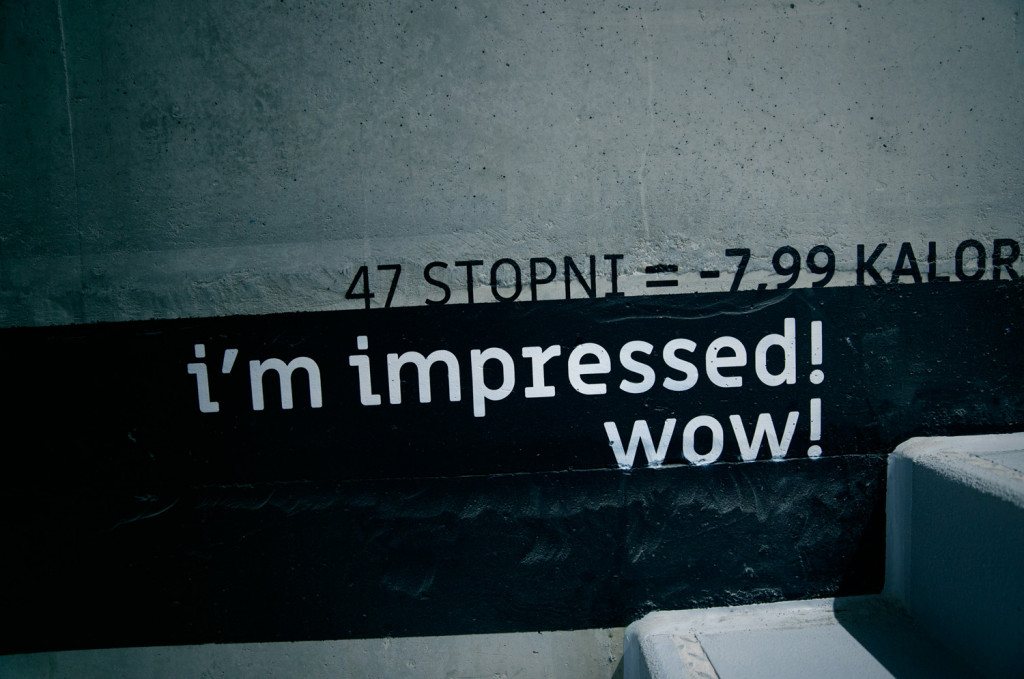













INTERVIEW
Michał Massa Mąsior

PHOTOGRAPHY Michał Massa Mąsior MODEL Paweł Piotr Polak (AS Management) MAKEUP Alicja Schwertner-Ochmańska (Womanhood Studio) STYLING Marcin Wypych (Mustwear MW) CAMERA Leica S (Typ 007) with Vario-Elmar-S 30-90 f/5.6 ASPH. and Summarit-S 70 f/2.5 ASPH. (CS) and Leica Q
Michał Massa Mąsior’s series tells the story of an offbeat drifter living beyond the confines of modern meritocracy. The result is a dynamic feature imbued with rough, grungy colours and aloof poses.
What can you tell us about this story? What is the guiding theme?
I wanted to show a drifter, a man of the streets who is not conforming to a life shaped by the rules of large corporations. This is why I photographed him inside a modern office building. Today’s office spaces are generally designed to make employees feel at ease, with artfully graffitied walls, recreational games, relaxation rooms and a casual, family-like atmosphere. But at the end of the day, they are still nothing more than open-plan spaces with little chance of privacy, set behind security barriers and doors that open with an electronic ID badge. They’re still just a work station with a chair and a computer; the same old treadmill, the same competition for higher wages. This type of environment provides a relatively fast way to move up the career ladder – but those who struggle to adjust often end up with severe depression and family problems. My protagonist has an entirely different perspective. On the one hand, he is mocking the situation; on the other, he can’t quantify it, because he lives by his own rules.
The location seems bleak and disaffected. Where is this place, and how did you discover it?
Over the last few years I’ve been doing some architectural photography. I was commissioned to create advertising pictures for a new office building in Krakow. When I went there to see about the lighting conditions, I saw that the building hadn’t been finished. The interior was gloomy, the walls were still clad in foils and construction panels. So I decided to delay my commissioned shoot by a couple of weeks – but I also thought that the current space would be incredible for a fashion project. I knew I had to act very quickly because with every passing day, the site would look more and more ‘civilised’. I immediately rang up the model who had posed for me a few hours earlier, and booked a stylist and a make-up artist. Then I begged my architectural clients not to change anything in the lobby, and to allow me to use it for a personal project. Two days later, we were on set and shooting.
Speaking of your model: he really does emanate that sense of aggression and detached cool that is so essential to this story, and his characterful features are perfect for the role of the non-conforming dropout. What can you tell us about this particular collaboration?
Krakow is gaining in international popularity, both as a tourist destination and a place to work. This development is also beneficial for the city’s fashion industry. Nevertheless, the rosters of local agencies are still dominated by models with Central-European features. So I cherish the opportunity to work with someone whose looks are a little more unusual. Paweł (model’s full name: Paweł Piotr Polak, editor’s note) reminded me of the protagonists in Guy Richie’s movies. I had worked with him before, and we get on really well. He approaches his works in a very conscious manner, and always contributes to the project with great ideas of his own. He is also very aware of how to apply his body and convey nuanced expressions of aggression. The funny thing is that he’s actually a really calm and very cultured guy. I’m sure this won’t have been the last time we work together.
Your series includes several portraits. I get the impression that you are very suited to this genre. How do you manage to balance artistic aspirations with the requirements of commercial projects?
I do really like portrait photography. Sometimes too much, because having such as strong preference can be slightly limiting. Of course I could simply say, well, that’s just my style. But to be honest, I would like to embrace a broader perspective of the world. Especially given that I’m not a big fan of long focal lengths. I keep a notebook in which I jot down my ideas. I always try to write down my objectives for the next shoot. Usually I start with something like, “broaden your view, idiot!”. Having said that, fashion shoots tend to be very fast-paced and dynamic, so that I don’t always get time to refer to my notes. (laughs)
When I work with commercial clients, I take a much more structured approach. I try to make sure that every element of the idea and the storyboard is approved by the client. One the one hand, I always strive to create work that I can be proud of; but equally, photography is my livelihood – at the end of the day, someone has to be willing to pay for the finished product. So I have to be a little bit flexible in my thinking. However, as my evolution as a photographer progresses, I am increasingly dedicated to enforce my ideas.
There has been talk about an upcoming exhibition of your work in one of Warsaw’s most important galleries. Can you already tell us something about this?
I am involved in a year-long collaboration with a leading Polish curator. Interestingly, it was one of the images in this series that gave us the idea for an exhibition. In fact, we have plans for Paweł to contribute more extensively to the project. But I don’t want to give away too much. We’ve only just started working on it. What I can say is that I am trying to create a project that is as honest and personal as possible. I’ll certainly be sure to tell the S Magazine all about it in due course.
What equipment and which lenses did you use for this project? And how did you approach the lighting – did you shoot exclusively with available light?
And finally, the product placement question! (laughs) All joking aside, I cannot say this often enough: Leica make the most comfortable equipment I have ever had the chance to work with. For this project, I chose the Leica S (007), the
Elmarit-S 45 f/2.8 Asph (CS) and the Summarit-S 70 f/2.5 Asph (CS). I shot exclusively with available light. The great advantage of the S-System is its remarkable ability to deal with high light sensitivities: I have no qualms about shooting at ISO 3200. In addition, the operating speed and ergonomics of a classic DSLR make it possible to capture even dynamic scenes in medium format. And I can’t wait to see what the new Leica S3 has to offer.